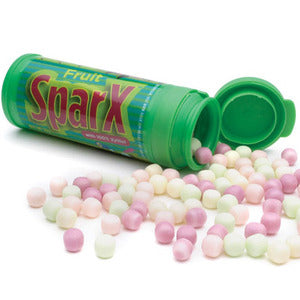I am so grateful to Dr. Katja Rowell, MD, for not only giving two copies of her new book
Love Me, Feed Me: The Adoptive Parent's Guide to Ending the Worry About Weight, Picky Eating, Power Struggles and More
(aff) away to my readers (see
this post - giveaway now closed!) but also for volunteering her time to answer my readers' questions. During the giveaway readers were given the opportunity to ask questions about adoption- and fostering-centered feeding issues and in this post Dr. Rowell (aka
The Feeding Doctor) answers two of them. In a second installment, Dr. Rowell will answer a few more. You can find much more on both of the topics addressed here in
the book
.
This information is educational. It is not meant to replace careful evaluation and treatment by medical, nutritional or mental health professionals.
Reader Question #1 (from Gabby):
Do you recommend foster parents leave food accessible, such as bowls of fruit on the counters/basket of snacks on the shelf at kids' level; or just provide healthy meals and snacks on a set schedule? In training we've heard conflicting strategies up to, and including, giving the child their own container to keep wherever they please and allowing them to "hoard sensibly" while helping them clean out the container weekly... What is your best suggestion for dealing with foster children with food issues?
The best way to lessen hoarding behaviors is to lessen anxiety about food.
Too often, the food stash is presented as the solution to hoarding and food anxiety. It seems to have been presented to you as an either/or scenario: food stash, or healthy food on a schedule? I think the answer is both, or no stash, and that it may change with time. One of my main goals is to empower you, to help you know there is no perfect solution or anything that says you have to get it “right” from day one. That’s not how parenting works. We figure it out with each of our kids…
What I am firm about is that if you offer a food stash, it is not an “out” for providing regular meals and snacks. (Note I did not say “healthy” as I believe that to learn to handle and enjoy all foods, meals and snacks need to include “healthy” and not-so-“healthy” options.) My main concern with the stash, or allowing the child to help himself to the pantry, is that it misses the opportunity to complete bonding cycles and deepen the attachment with your child. For the older child who had to be self-reliant with feeding, showing that you will take care of him is important, and feeding is a concrete way of doing so. Feeding is about trust and nurturing, whether your child is 15 months or 15 years old.
Allowing the child to help himself to food at will can also undermine self-regulation, or knowing how much to eat, which is a skill your child may need to relearn.
Here are two scenarios from my book
Love Me, Feed Me: The Adoptive Parent's Guide to Ending the Worry About Weight, Picky Eating, Power Struggles and More:
“Consider Marcus, who did not want to let go of his biscuit. He certainly can be allowed to hang on to the biscuit for a while, and maybe even have one in a baggie in his pocket. Follow his lead. If he throws a tantrum about having it taken away, allow him to carry it with him. But the parent also has to be absolutely reliable about regularly providing food. You may need to offer food more frequently at first, perhaps every hour or so.
In a different case, three-year-old Arielle, adopted at 11 months, was on calorie restriction and was experiencing intense food anxiety and preoccupation. Mom tried to let her carry food in an attempt to address her anxiety, but Arielle gobbled it up and begged for more. In this scenario, Arielle’s actions were not the “hoarding” behaviors seen when a child first arrives from a place of food insecurity, but were actually symptoms of a feeding relationship disruption due to her food restriction (see Chapter 5). Letting her have her own stash of food to carry around didn’t work for this family in this situation.
Feeding your child directly shows your child that you will take care of her and builds trust. Completing that cycle of need and meeting her needs, over and over again, is the basis for attachment.”
A few other thoughts:
- Offer frequent reassurances such as, “There will always be enough food.”
- Show him the pantry during the day, perhaps even as you end a meal, “See, there is always enough food here.”
- Plan on pleasant family meals—if you’re battling over broccoli or a therapy task, that’s not helping him feel more secure.
- Structure is critical. If you go to the park, don’t forget to bring a balanced and filling snack.
- Offer food every 2-4 hours depending on your child’s age. Include fat, protein and carbs.
- Institute the Division of Responsibility. At meals and snacks, he gets to eat as much or as little as he wants from what you provide. Even if he eats a lot initially, this will reassure him.
What it boils down to is this: with reliable, pleasant, and satisfying meals and snacks, hewill learn over time that he doesn’t have to worry about when or how much he will get to eat. You get to worry or think about the food, so he doesn’t have to.
Reader Question #2 (from Ben):
How do you respectfully integrate your own family's eating habits and preferences with a child's? For instance we eat a lot of vegetarian only meals, and not a lot of processed foods. How would we honor a child's past experiences while also, hopefully, demonstrating our own?
This question is so thoughtful. Rather than ask, “How can I get her to eat my way?” I think you are asking how can I help her feel honored, safe and nurtured while helping her learn to eat a variety of foods as part of our family. By using the word integrate, you sense that it will take time and is a process. How we frame these questions matters.
I recommend handling this how you might handle an entrenched selective eater. Familiar foods feel safe. Early on especially, it is best to focus on “heart needs” as one client put it, rather than worrying too much about nutrition. All too often, adoptive and foster parents find themselves so caught up in nutrition and weight worries that they push and pressure children to eat only “healthy” foods. Alas, this can lead to conflict and power struggles, and doesn’t help the child learn to eat a greater variety of foods. Often, in fact, it makes matters worse. (Particularly with older or traumatized children, or children with sensory issues.)
- If you are fostering an older child, consider asking her what her favorite foods are. Also ask if there are foods she likes in general or if there are foods she doesn’t like “right now.” (You never know, she may have been forced to eat foods she has gagged or vomited, or held down and forced to eat.) Hopefully her list of favorite and accepted foods will include a few foods that you are comfortable serving: bread, tortillas, rice, pasta, crackers, corn, canned mandarin oranges, baked beans…
- Provide her favorite sauce or condiment. Keep a Ketchup bottle at the table, or mustard, or hot sauce that she can use as she sees fit. She may put ketchup on everything for a while, and that’s okay. (Research shows that condiments help children branch out.)
- If she likes crunchy foods, consider offering new foods that are also crunchy. If she tends to like more smooth textures, consider offering puddings or applesauce.
- Offer meals and snacks every 2-3 hours for younger children, and 3-4 for older children, maybe more frequently when a child first arrives if they are food insecure.
- Sit and eat together, whenever possible, without TV or other distractions.
- Reassure her that there will always be enough food, and that she doesn’t have to eat anything she doesn’t want to.
- You can consider asking her to try a new food, and see how she reacts. Some children will try it, others will rage or protest if required to take a “no thank-you bite.” Take her lead.
- Always have at least one thing from her accepted list on the table. She needs to feel that she can come to the table and feel that her hunger will be fed.
- Consider leaving herbs on the side for now. If you make a Curry, put the cilantro in a little bowl on the side and serve it with rice. If your child isn’t fond of spicy food, prepare foods more mild than usual, and add hot-sauce to your own at the table.
- Perhaps serve corn bread or one of her favorite sides with your lentil dish.
- Invite her to help you meal-plan if she is old enough. Perhaps you can say, “We’re having lentils for dinner. Would you like cornbread or rice with that?” Resist the urge to argue, pressure or fight, even if she refuses the food she chose.
When children feel anxious (adults too for that matter) or there are battles at the table, it makes it close to impossible to learn to eat. Stress can kill the appetite or make some children (food insecure or restricted) eat more, so a pleasant table is important. Try to focus not on who is eating how much of what, but on each other. Ask about whom she sat next to at lunch, or how her favorite are class is going. Talk to other family-members too.
Other ways to help children feel safe and “in control” at the table:
- Set out paper napkins and let her know that she may politely spit out any food she doesn’t want to swallow. Children are much more likely to try a new food if they can spit it out.
- Don’t worry about enforcing manners right away. Lead by example.
- Serve foods family-style (so she can serve herself)
Try not to worry if all she eats is bread and milk for a little while. Make up for balance where you can. Fruit leathers or dried fruit, 100% fruit juices or nectars, smoothies at breakfast, popcorn for fiber, maybe a good chewable multivitamin. And hang in there. As sixteen year-old Yiseth said,
“Think of it from the kid’s point of view. What is the kid thinking? It shouldn’t be ‘how can I get her to try this,’ but ‘how can I help my child do this at her own pace.’
Over time, and it may take a lot of time if your child has been neglected or abused around foods or if she has sensory issues, she will feel safer with these tips and will be more likely to enjoy your family’s foods.
A lovely resource that helped me “see it from the kid’s point of view” is the book
Three Little Words: A Memoir
by Ashley Rhodes-Courter, who describes her ten years in foster care. She explores her neglect and even abuse around food, and how at thirteen, she bristled at the nutrition lectures and pressure from her loving and concerned adoptive parents.


















